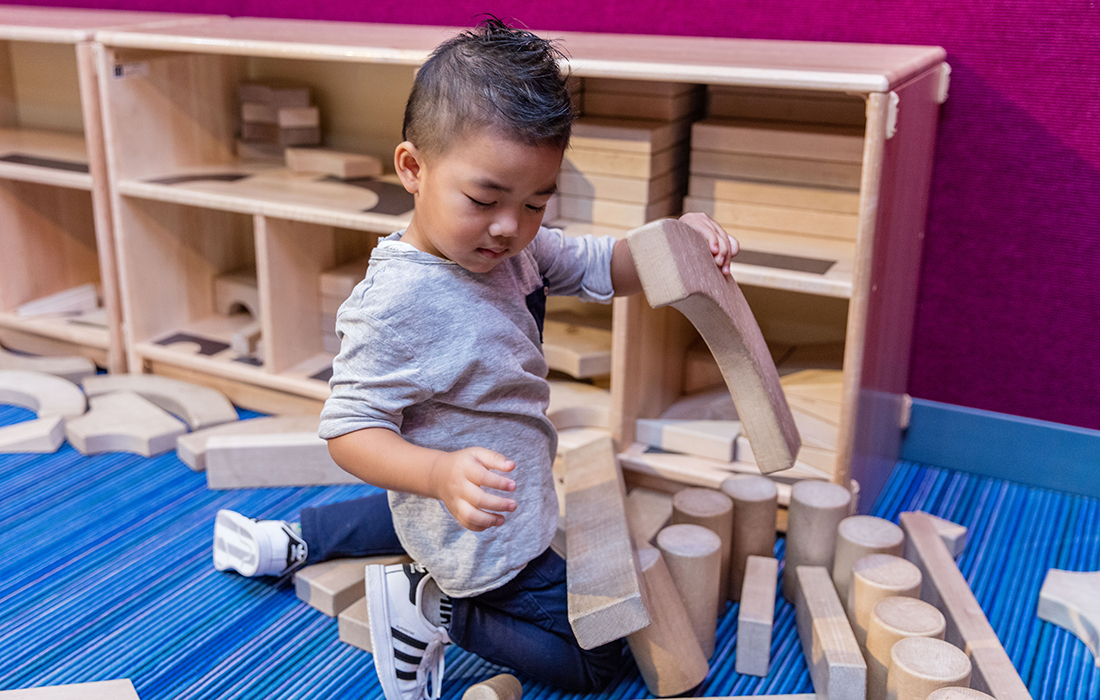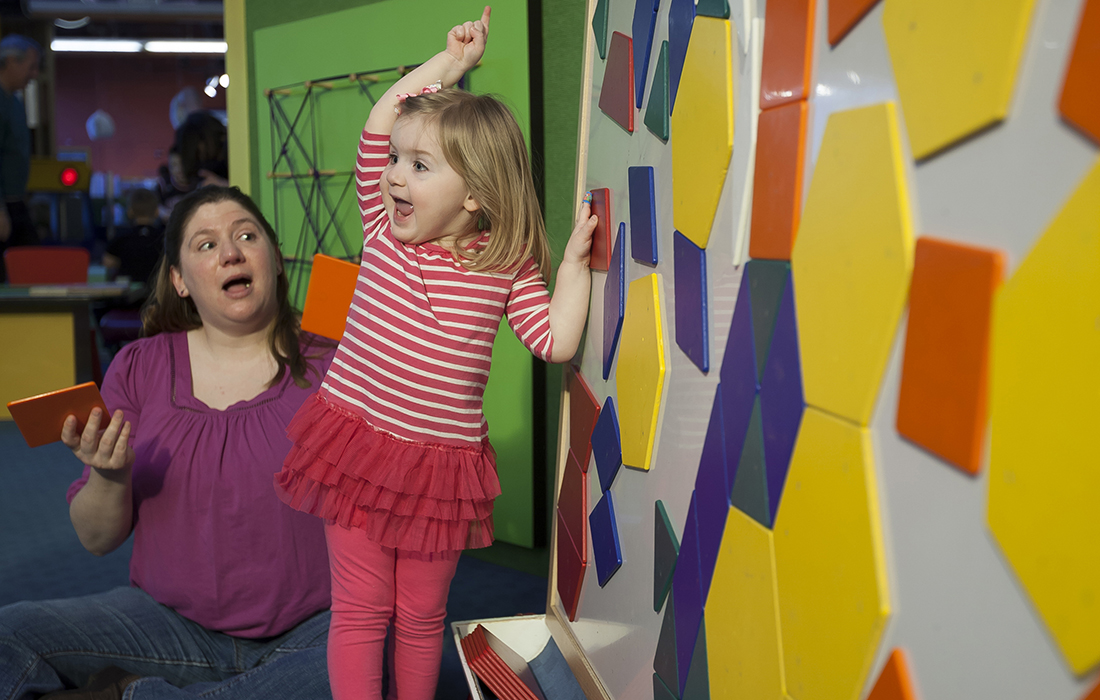Back to School Bonanza | Saturday, August 10, 9–2

Back to School Bonanza | Saturday, August 10, 9–2

Almost everything we do contains mathematical notions, whether it’s serving a meal (patterns, counting, and estimation) or riding a bike (ratio, distance, spatial orientation). Clearly, math happens everywhere. But Math Connections is a special place where visitors can investigate and reflect on concepts at their own pace.
"There is a difference between not knowing and not knowing yet."
Shelia Tobias
Big bricks, small bricks, bright bricks, bold bricks, so many bricks! A brick builder’s paradise full of LEGO® Bricks and Duplo® Blocks will be at DuPage Children’s Museum (DCM) for a limited time. The learning possibilities with LEGO bricks are endless. From engineering and science to storytelling and collaborative play, LEGOs do it all. Children (and adults) can build on tables, walls, and floors, unleashing their creativity and problem solving skills. Come build with us!

Unit Blocks are the granddaddy of all learning-focused block play. Created well over 100 years ago, these (and all blocks for that matter) are a perfect entrance point to literacy, science, math, social studies, social and emotional development, and on and on! Unit Blocks are the building blocks of future learning.

Explore 2-D shapes and symmetry, and practice using math language. The simple shapes can be used to compose larger shapes. What will you create with these shapes?
Here are a few math basics you can explore:
SORTING is the ability to recognize common relationships among items—a way of figuring out what property defines a class. Children naturally begin with properties that are meaningful to them, and very young children often change their categories as they sort. As children gain experience in sorting and classifying, they find that they can sort items into sets and subsets.
PATTERNS are a part of life from day one. We use them not only to learn about the physical world, but also to predict what comes next in our daily routines. When people play with patterns by manipulating and extending them, the result can be as wide-ranging as music, art, science, and literature.
SPATIAL AWARENESS is a meshing of physical and cognitive skills. A great deal of moving around, climbing, touching, and looking is needed to judge size and distance, to understand that objects keep their shape no matter how you turn them, and to understand directionality.
Math Vocabulary Words:
Can you find ways to practice these with the exhibits?
MEASUREMENT: The size, length, width, capacity, weight, quantity, or rate of an object
GEOMETRY & SPATIAL VISUALIZATION: Being able to visualize relationships of objects in space. Language includes: up, down, around, on top of, to the right of, to the left of, about, more than, and less than.
ESTIMATION: Not guessing. No exact answer. Using a referent (sample amount of something) to base a judgment of an amount. For example, seeing that there are 25 jelly beans in that bowl, how many jelly beans do you think are in that jar? Language includes: about, near, closer to, between, a little less than, etc.
GEOMETRY: The area of mathematics that involves shape, size, position, direction, and movement and describes and classifies the physical world we live in.
TESSELLATION: A tessellation is created when a shape is repeated over and over again covering a plane without any gaps or overlaps.